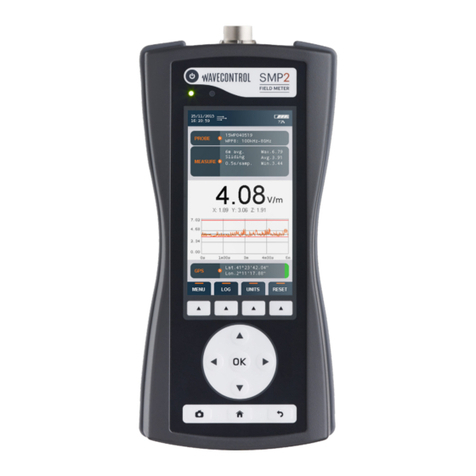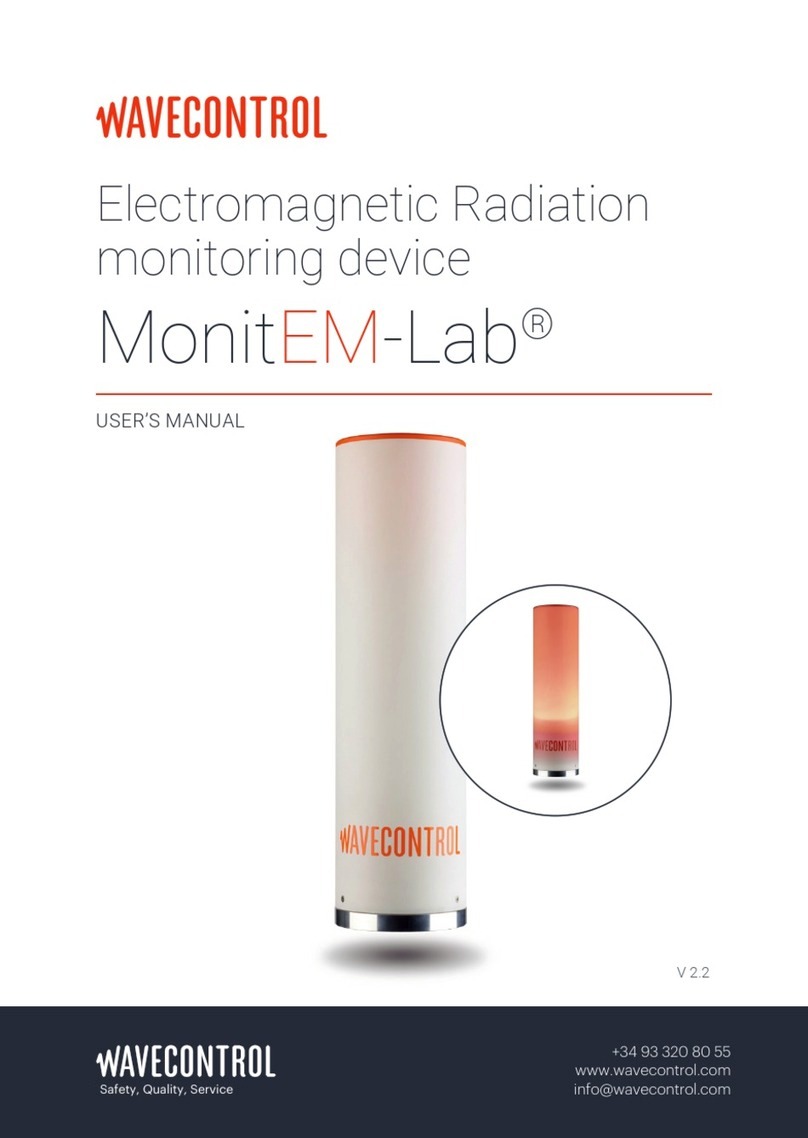INDEX
1 WARNINGS AND PRECAUTIONS......................................................................3
2 INTRODUCTION....................................................................................................4
3 FIRST STEPS...........................................................................................................5
4 GETTING STARTED..............................................................................................6
.1 OVERVIEW....................................................................................................................... 6
.2 CONNECTING THE FIELD PROBE............................................................................................8
.2.1 Connecting the probe ......................................................................................................8
.2.2 Disconnecting the probe..................................................................................................9
5 OPERATION..........................................................................................................10
5.1 SWITCHING THE APPARATUS ON AND OFF..............................................................................10
5.2 MAIN SCREEN..................................................................................................................10
5.3 CONFIGURATION SCREEN....................................................................................................12
5. MEMORY SCREEN.............................................................................................................1
5.5 MEMORISED DATA SCREEN.................................................................................................1
5.6 FUNCTIONS.....................................................................................................................15
5.6.1 Memorisation of measurements.....................................................................................15
5.6.2 Calculation of averages.................................................................................................15
5.6.3 IS measurement.............................................................................................................16
5.6. Maximum and minimum field.......................................................................................16
5.6.5 Alarm.............................................................................................................................16
5.6.6 GPS................................................................................................................................17
6 RECHARGING THE BATTERY........................................................................18
COMMUNICATION SMP - PC ..........................................................................19
7.1 INSTALLING THE HARDWARE...............................................................................................19
7.1.1 USB driver installation .................................................................................................19
7.2 DATA DOWNLOAD SOFTWARE.............................................................................................20
7.2.1 CSV exportation............................................................................................................21
7.2.2 GIS web site exportation...............................................................................................22
7.3 REAL TIME DATA VISUALISATION.........................................................................................23
8 FIRMWARE UPDATING.....................................................................................25
9 MAINTENANCE....................................................................................................28
9.1 CLEANING THE APPARATUS AND THE SCREEN.........................................................................28
9.2 HANDLING THE EQUIPMENT................................................................................................28
9.3 REGULAR RECALIBRATION..................................................................................................28
10 TECHNICAL SPECIFICATIONS.....................................................................29
11 WARRANTY........................................................................................................30
- 2 -
































